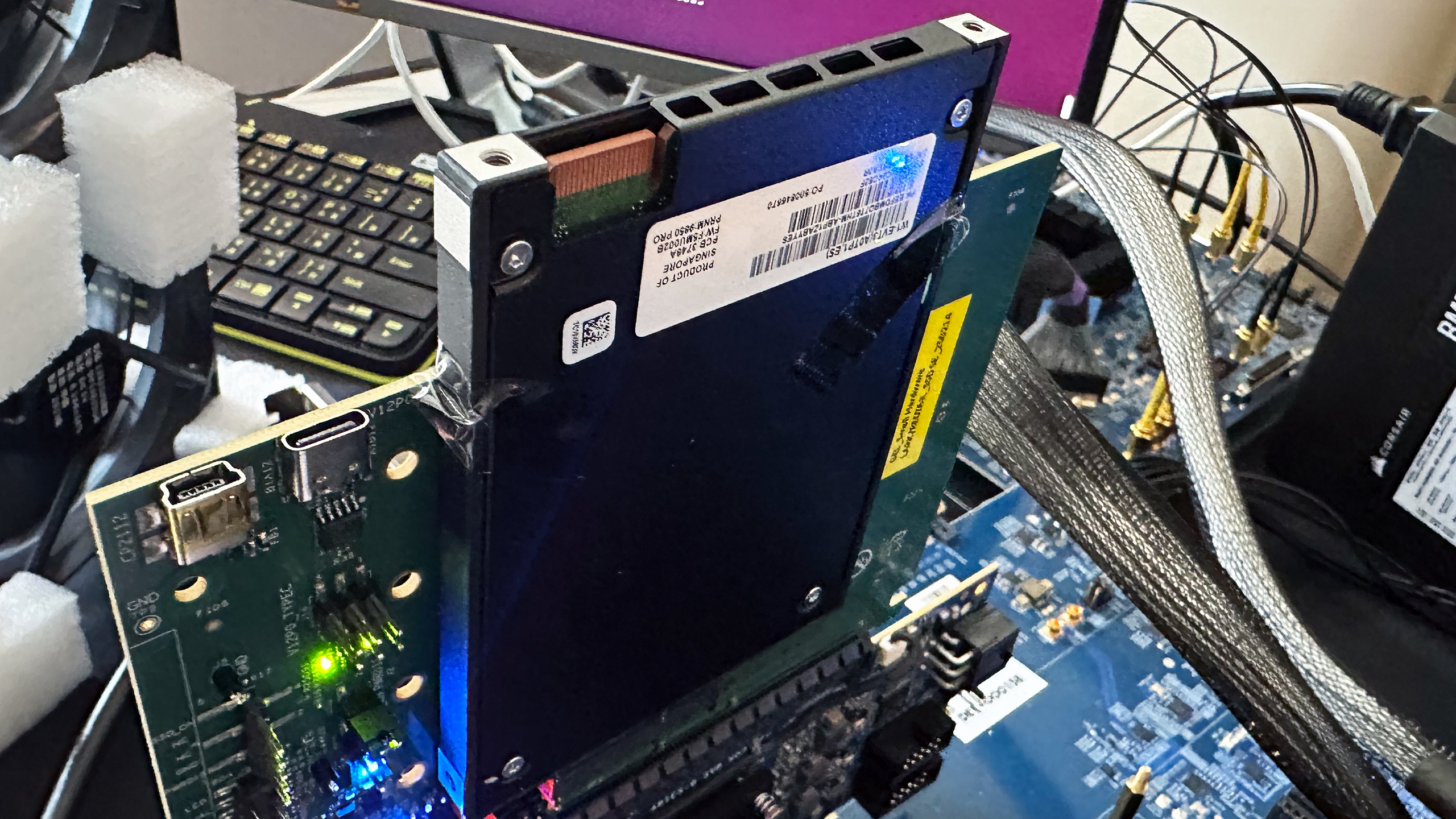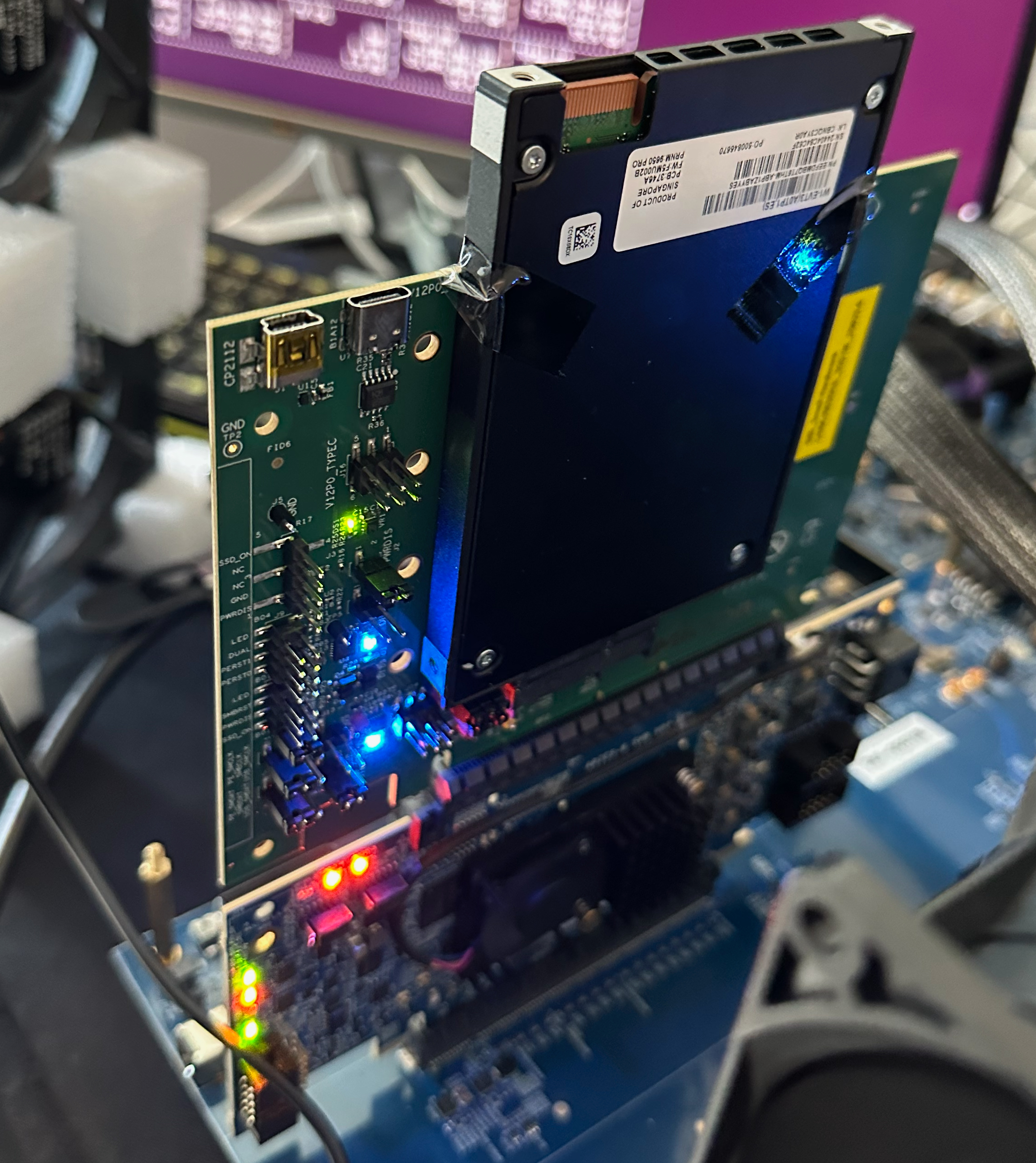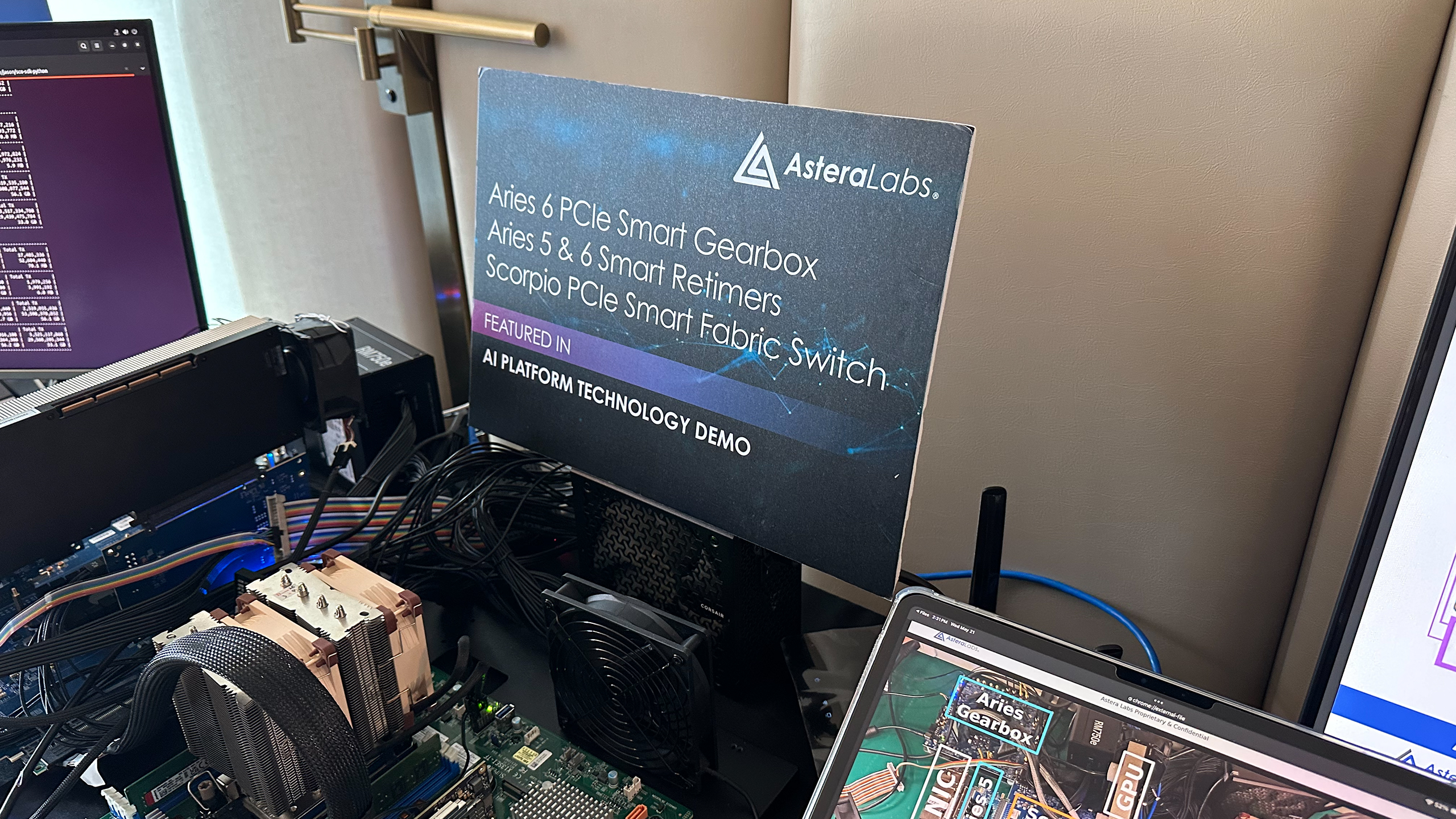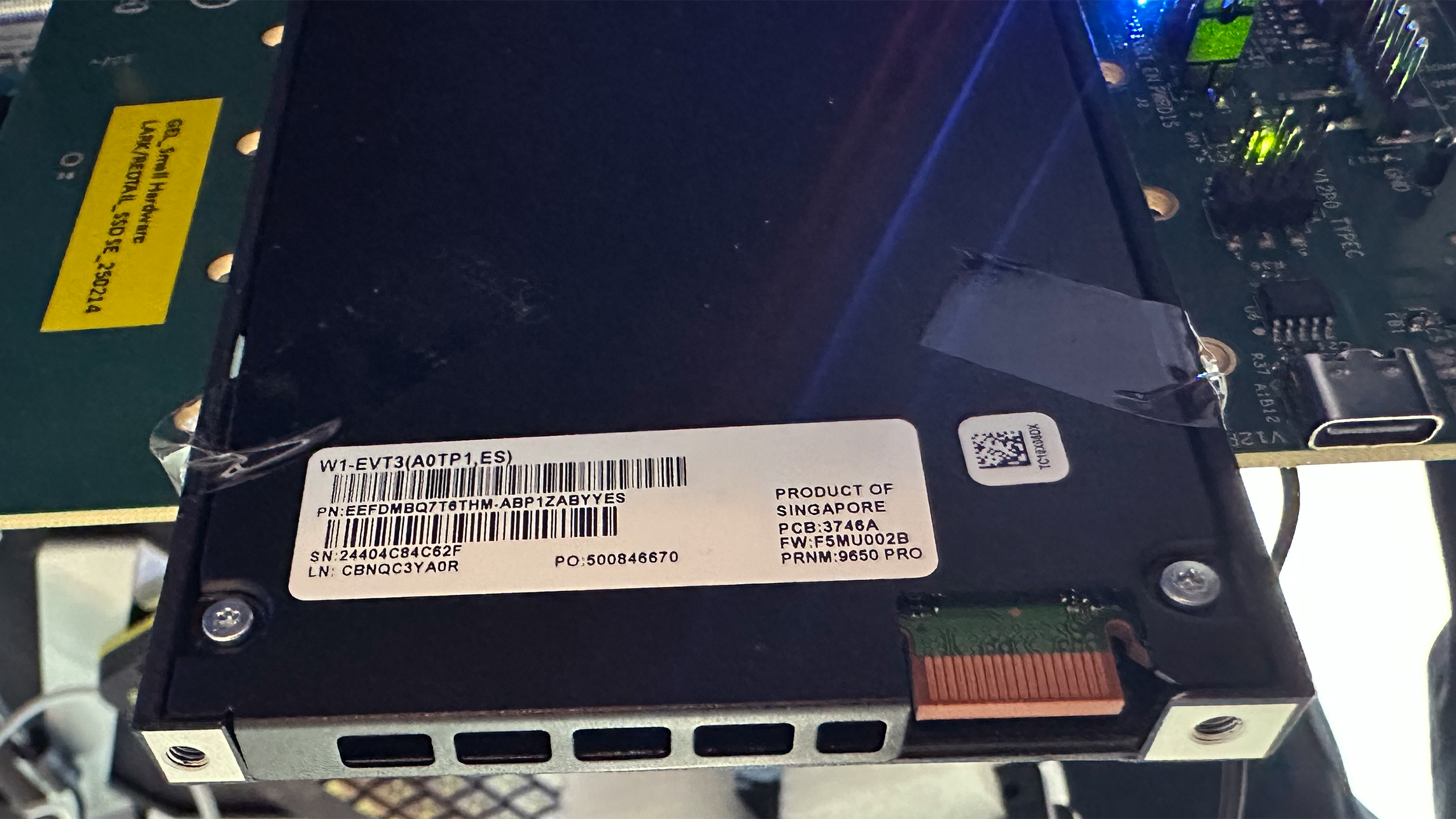PCIe 6.0 SSD with 30.25 GB/s speeds debuts at Computex, release date is still a long way off

There are dozens of solid-state drives with a PCIe 5.0 interface over at Computex 2025, and they no longer surprise us; however, we have seen a drive that features a PCIe 6.0 x4 interface and can potentially boast a 30.25 GB/s sequential read and write speed at the trade show.
Micron’s 9650 Pro SSD with a PCIe Gen6 interface will unlikely launch anytime soon, but for now, the unit is an important test vehicle for companies like Astera Labs, which plays an important role in developing next-gen AI platforms. At the show, Astera Labs used Micron’s PCIe 6.0 SSD to demonstrate its Scorpio PCIe 6.0 4x16 switch, Aries Bandwidth-matching Gearbox software, and Aries 6 timers.
Although Nvidia’s Blackwell GPUs feature PCIe 6.0 x16 connectivity, no CPU platforms formally support PCIe 6.0. Nonetheless, PCIe Gen6 SSDs like the Micron 9650 Pro can be quite useful when utilized with platforms featuring PCIe 6.0 switches. For example, PCIe 6.0 switches can enable peer-to-peer communications between AI GPUs and SSDs, bypassing the CPU. In addition, when paired with Astera’s Gearbox software and hardware, they can reduce the number of PCIe 6.0 lanes required to work with PCIe 5.0 hosts (e.g., to achieve a PCIe 5.0 x8 performance only for PCIe 6.0 lanes are needed) and therefore enable instalation of more drives into a box, which can be critical for some AI systems.
Certification of PCIe 6.0 devices by PCI-SIG was delayed from mid-2024 to the second half of 2025, so while GPUs like Nvidia’s Blackwell support the technology, they have not passed official interoperability tests. As for Micron’s 9650 Pro SSD, the unit used by Astera is marked as EVT3, so this is the third revision of the Engineering Validation Test. Generally, this means that the product has undergone at least two prior engineering validation builds (EVT1 and EVT2), and the third build is undergoing further validation and testing.
While EVT3 is still considered pre-production, by the third revision, most hardware issues should be resolved, and firmware/software should be approaching maturity. Just as a reminder, EVT1 is used for initial hardware bring up, EVT2 fixes all major hardware issues, and can be used for firmware development, and EVT3 features near-final hardware and therefore can be used for performance validation, thermals, compatibility and interoperability testing, and demonstrations at trade shows.
There are two iterations to go through: DVT (Design Validation Test) to validate the design under production conditions, and PVT (Production Validation Test) for full qualifications by customers. We do not know whether Micron will wait for the PCI-SIG to initiate interoperability tests in the second half of this year or will first start qualifications of its 9650 Pro PVT drive with select customers interested in PCIe 6.0 storage, but technically, EVT3 can be used for PCI-SIG’s compatibility validation.
Follow Tom's Hardware on Google News to get our up-to-date news, analysis, and reviews in your feeds. Make sure to click the Follow button.
Get Tom's Hardware's best news and in-depth reviews, straight to your inbox.

Anton Shilov is a contributing writer at Tom’s Hardware. Over the past couple of decades, he has covered everything from CPUs and GPUs to supercomputers and from modern process technologies and latest fab tools to high-tech industry trends.
-
Stomx It was actually no need to develop PCIe6.0 for achieving such read speeds when even grandpa PCIe 4.0 was perfectly OK for that. Just use all PCIe4.0 lanes by placing NVMe into adapter occupying and using all PCIe 16 lanes not just 1/4 of them. That would require different controller and not using NVMe standard.Reply
This standard I find totally stupid. Most of laptops use soldered NMVe and RAM not allowing to upgrade SSD while saving space by using NVMes for desktop computers is a total nonsense. There is an empty space for 1000 NVMe in your desktop computer box. Or may be for 10000
It would be totally acceptable to see 2-3x wider and 1.5-2 longer NVMe drives for the desktop which could make cooling of them easier as well as increasing their capacity if needed. -
Krieger-San Reply
If we don't continue developing new standards, we'll end up in a stagnation period like we did between PCIe 3.0 & 4.0.Stomx said:It was actually no need to develop PCIe6.0 for achieving such read speeds when even grandpa PCIe 4.0 was perfectly OK for that. Just use all PCIe4.0 lanes by placing NVMe into adapter occupying and using all PCIe 16 lanes not just 1/4 of them. That would require different controller and not using NVMe standard.
This standard I find totally stupid. Most of laptops use soldered NMVe and RAM not allowing to upgrade SSD while saving space by using NVMes for desktop computers is a total nonsense. There is an empty space for 1000 NVMe in your desktop computer box. Or may be for 10000
It would be totally acceptable to see 2-3x wider and 1.5-2 longer NVMe drives for the desktop which could make cooling of them easier as well as increasing their capacity if needed.
IMO, this hurt innovation, kept 10Gb networking in the cost realm of business & enterprise only.
I feel that the higher generations will find their fit, mostly in datacenters where its benefits are merited (ex.: a system serving thousands of users at once), or in power savings for peripheral cards (ex: new PCIe 4.0 network card, sub 5w @ 10Gb on copper cabling).
And it'll certainly benefit the >400Gb switches (datacenters) that run AI; RDMA targets with massive bandwidth will love this.


